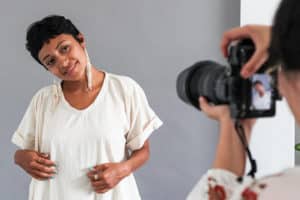Essential Photography Equipment For Beginners
April 23rd, 2021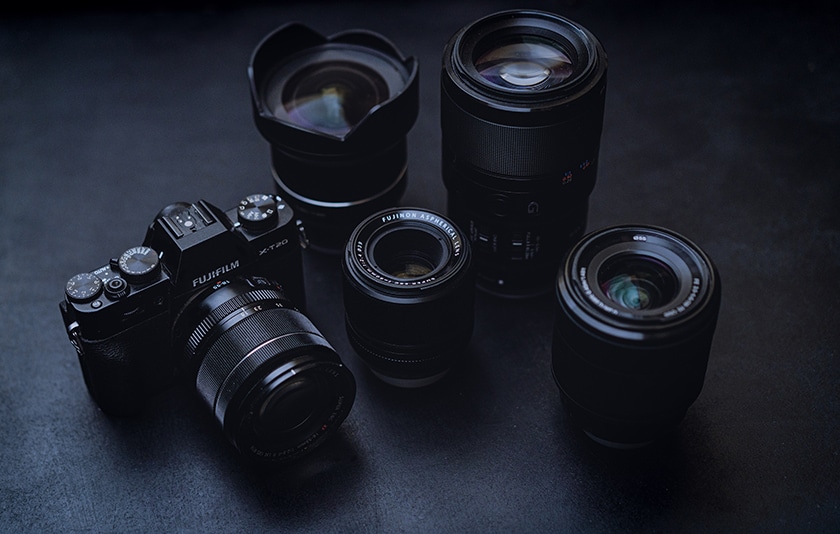
When starting out, long before creating a portfolio website to sell photos online, you’ll have invested a good amount of money in photography equipment. While watching some pro photographers offer their insights on the best gear to get started with a photography business, I was surprised to hear what they considered the essential equipment for beginner photographers.
Mostly, I was surprised to hear that anyone would find it reasonable to put in such a massive investment in equipment just to get started in the business.
In this case…
- $800+ Full frame/DLR/Mirrorless camera body
- $1000+ 24-70mm f/2.8 Lens
- $1100+ 70-200mm f/2.8 Lens
Plus accessories such as an external flash ($300+), SD cards, hard drives, tripods…
And a backup camera…!
And that is just to get started!
This means you’re expecting to spend $3500+ just to get started with a basic kit as a photographer.
This is no basic kit. This is the dream kit that you can work toward as more work comes your way. You can always invest more in your business after getting started as long as your initial investment is optimized for growth.
Unless you have a trust fund sitting around collecting dust, or set up a business plan to present to your bank to take out a loan, this just isn’t practical. Most photographers I’ve known don’t start with anything close to this when they are strategizing how to get started as a professional photographer.
Pro tip: Your gear needs might be drastically different if you are shooting a landscape, wedding, sports, etc…
Let’s begin by saying – whether you are buying new or used, you can get the absolute essentials for starting your photography business at a fraction of the cost recommended by established professionals recommending the biggest sensor, the widest range of fast zooms, etc., etc.
In the beginning: Film to Digital
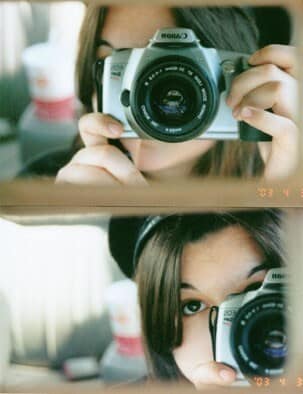
With so many choices out there, it’s hard to know where to look when it comes to getting started as a photographer. Which brand? Which kind of camera? What’s a crop sensor? There are some rules of thumb that can definitely help you narrow things down.
To give you some context, when I was growing up, you could still buy film SLR cameras at Best Buy. The first camera that I didn’t have to share was a Canon Rebel XT, which took 35mm film and had to be developed before you could see how the image turned out.
At that time, and for the generations before me, digital versions of cameras like this were multiple thousands of dollars for cameras with 2-5 MP (Megapixels). It was the latest tech, and it was priced accordingly.
Like most tech, though, the price came down through the years. Digital SLRs, or DSLRs for short, is the most popular photography format for amateur and professional photographers, and have been for at least a decade now.
For the generation that comes after me, the latest innovation – mirrorless cameras – presents even more exciting possibilities. So let’s take a look at the high points of contemporary photo gear, and see what the best options are for aspiring photographers looking to make their initial investment. Between the camera’s lens and time spent developing your own eye for it, that’s exactly what it is – an investment!
Photography is an investment of time, money, and passion.
If you plan to take yourself seriously as a photographer, you have to have at least a little bit of each of these things!
It’ll take some time for you to master the technique. It’ll take some money to get a dedicated camera instead of relying on your smartphone. It’ll take passion for you to keep shooting, and to have the motivation to reach out to people and be open to opportunities to improve your skills.
What Not To Buy: Point- and- Awwww-Shoot!
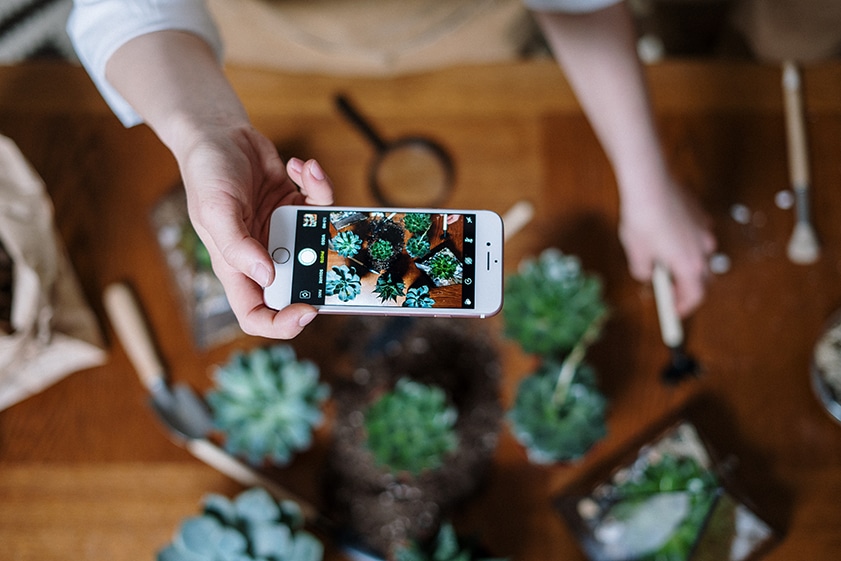
Unless you’re just wanting to take some photos while you’re traveling or share snapshots with friends and family, you’ll want to avoid point-and-shoot cameras. These are digital cameras that don’t allow you to change to a different lens. Generally, they have a zoom lens and a smaller sensor size. Often, they don’t have much more to offer than the camera in your cell phone.
This means that, first, you won’t be able to make prints from the photos at large sizes in many cases unless the lighting in the image is perfect, and the print is not too big. It also means that, rather than actually zooming in optically (via the lens mechanics), the zoom is happening digitally. Essentially, the wider view of the picture is cropped by the “digital zoom” of the lens. This results in blurry and pixelated images when they are blown up for large prints.
While there are notable exceptions to this rule, it’s a better investment of your hard-earned cash to purchase a camera you can grow with, and point-and-shoot cameras aren’t the best for this.
Investing in yourself: Choosing the best photography gear to grow with
First, a list of essentials that you’ll need no matter what specific model or item you choose:
Beginner Essentials:
- Camera body
- Lens
- Memory card
No matter what, you have to have at least these three things to take photos worth paying for.
Some strongly recommended accessories:
- Tripod (stabilize and compose shots)
- Lens filter (protect lens glass)
- Bag (protect gear and make transport easier)
- Extra battery/memory cards (obvious reasons!)
- Additional lenses (for a variety of compositions)
Bodies that Work
A couple of major things to consider when it comes to where you want to start with your gear.
Megapixels
Megapixels are the number of pixels recorded in an image by your camera. 16 Megapixels means 16 million pixels. That said, they aren’t the only quality concern for image quality. That’s because it’s the sensor that is also important, besides megapixels.
The sensor is the technology in the camera recording the pixels that could be great in low light, or weak in low light. It could be large and record quality detail in the pixels, or be a very small sensor, like the one in your phone, that becomes pixelated with too much handling like your favorite memes.
Crop-sensor
The sensor is the image processor of the digital camera and is analogous to the individual film negative. For the camera body, the most accessible formats to get started will be “crop-sensor” cameras, APS-C, DX (Nikon), or something similar. More expensive digital camera bodies are called “full frames” as they have the same image area as a 35mm film camera.
Basically, this means the “image area” of your shot is cropped in slightly from the same area on an equivalent 35mm film frame on a film camera. This doesn’t impact your image, except that, generally speaking, you’ll have a harder time making much larger prints (think 20×30 and above) from APS-C crop images.
It also means that a 50mm lens will look the same on a full-frame camera and a 35mm camera, but will look “cropped in” on an APS-C camera.
These types of cameras will have the most flexibility with the number of lenses you have to choose from, as you can use lenses made specifically for the crop-sensor, as well as higher-quality lenses made for full-frame cameras. You wouldn’t want to use a crop-sensor lens on a full-frame body.
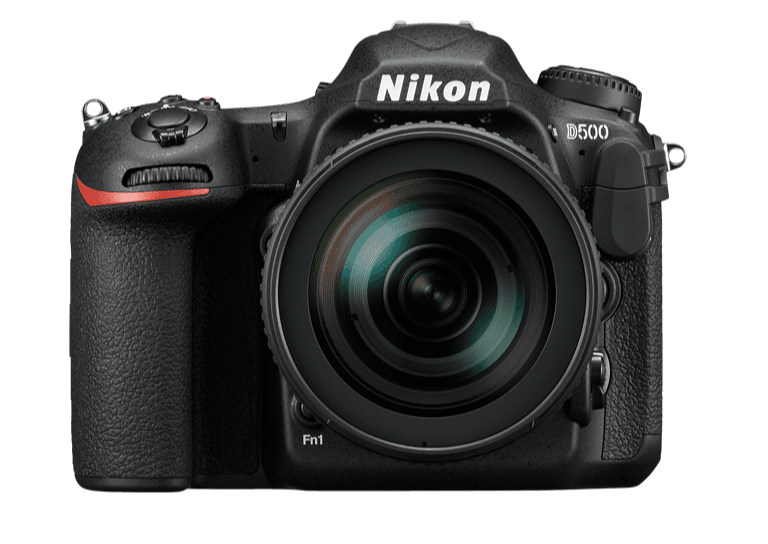
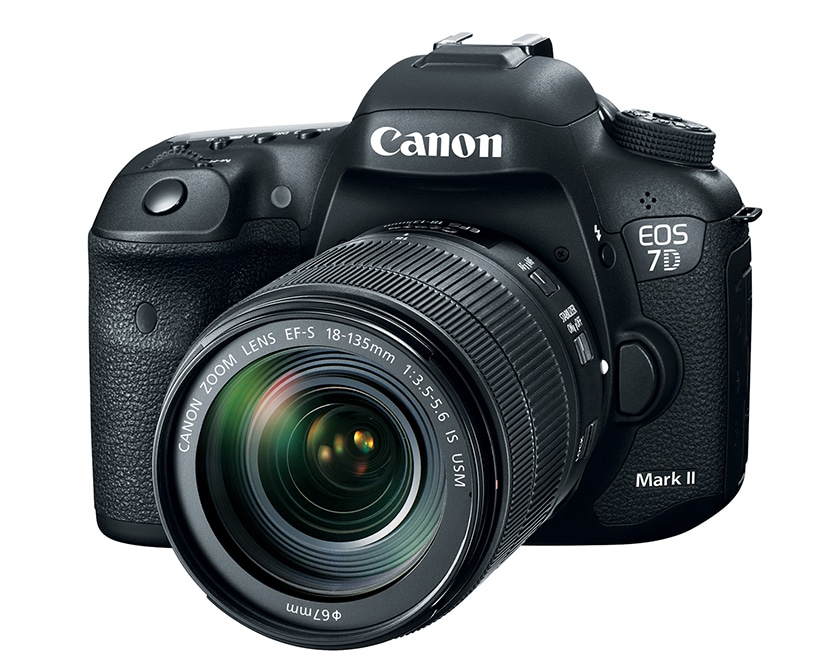
Most common photography brands carry an APS-C crop sensor entry-level DSLR. Canon’s popular REBEL series, or 7D and 80D cameras, will be APS-C DSLR cameras. Nikon’s D500, along with their 7000, 5000, and 3000 series cameras, will also be DX. Many of the Fuji Mirrorless lines will have APS-C sensors and the same with Sony’s a6000 series.
Speaking of mirrorless…
DSLR vs. Mirrorless
Digital interchangeable-lens cameras come in two major varieties:
- DSLR: these give you a view of the scene from inside of a viewfinder by way of a mirror inside the camera body
- Mirrorless cameras: these show you a digital view of the image you will get in either an Electronic View Finder (EVF) or with the screen on the back of the camera.
If you’re interested in learning more about manual exposure settings, Shutter Speed (1/125, 1/500 meaning that fraction of a second); aperture (f/2.8, f/5.6, f/11); and ISO (100, 400, 1600) and how each of these affects your image, it might be worth looking into a mirrorless system. This is because the electronic view of your image will be plain to see and already “interpreted” in the viewfinder or on the screen; you don’t have to take the shot to find out how it affects your image (except for motion, with the shutter speed.)
On that note there are options outside of the crop-sensor world that incorporate the benefits of mirrorless shooting.
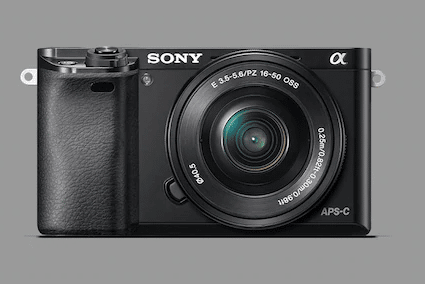
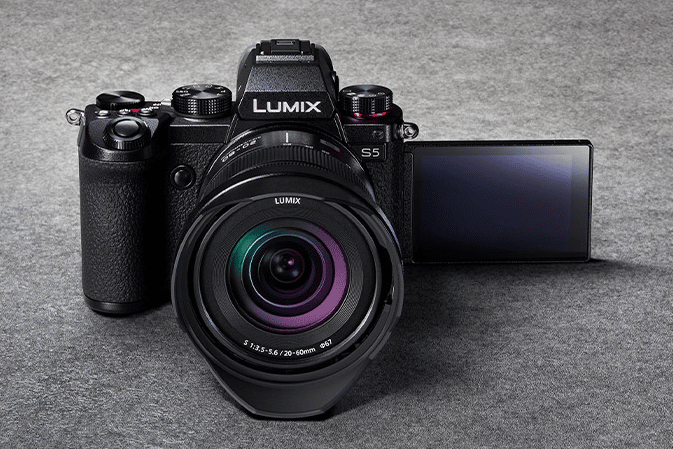
For example, Panasonic’s LUMIX series of mirrorless, interchangeable lens cameras have a slightly smaller micro 4/3 sensor (smaller than the APS-C or crop sensor) and are great cameras for getting your feet wet. The DMC-G85 and G7 are popular and highly rated and have a very accessible price point especially if you want to have powerful video capabilities as well.
Good Glass is Good Glass
Most modern bodies will have a “kit” lens that will come along with it if you choose the option. This often means the most barebones, entry-level, the basic lens will be included. It’ll likely have a bit of zoom, and won’t be excellent in low-light situations.
This is a fine place to start, though! That said, if you find a great deal on a camera body, you might consider researching a good “prime” lens for you. Prime lenses won’t allow you to zoom (they will be fixed at 35mm, 50mm, 85mm, 135mm, etc) but generally the optics – the translation of light through the lens to the image sensor – will be cleaner, sharper, and higher quality.
On a full-frame, 35mm camera equivalent, 50mm looks about the same as the natural view that your eyes have when looking at the world. Anything longer than that – 85mm prime, or 70-200mm zoom lens is considered a telephoto lens (zooms closer in); anything less – like a 24mm prime, or 16-35mm zoom, is considered wide angle and approaches a wider view to the point of a fish-eye effect in the widest lenses (8mm, 10mm, etc)
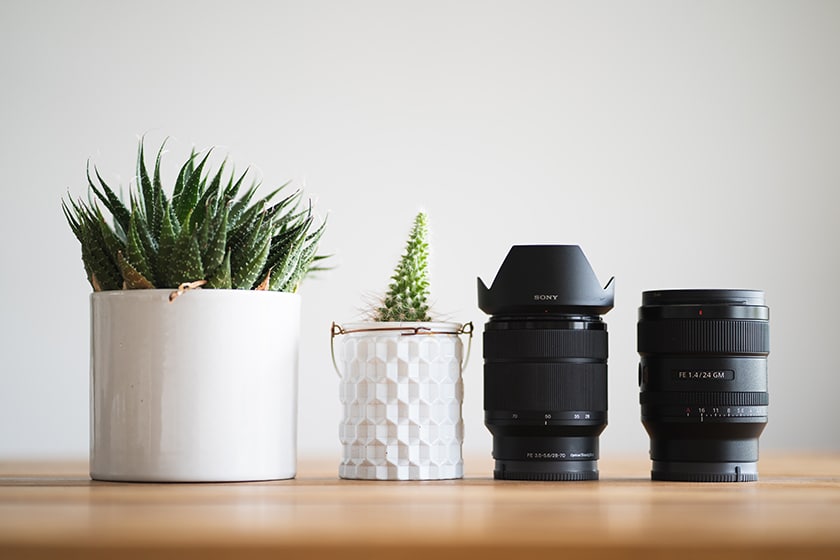
You will also have more flexibility to get a shallow depth of field offered by the prime lens’s “aperture” (f/1.8 vs the lowest on a usual kit lens might be around f/3.5). This means you can get blurrier backgrounds once you know what you are doing. Even if you DO know, if you are shooting on a lens that doesn’t allow it, you’re not enjoying the benefits of a good glass.
Do a good bit of research before deciding which lens is best for you, and rent one before buying to give it a test run, if you can. If there’s a good 35mm prime lens, and you know it will work for both a crop-sensor and a full-frame camera, then you know the glass is glass that will do a better job of holding its value and can grow with you, too!
In Conclusion – The Essential Camera Equipment For Beginners:
- Get something reasonably current – a 15+ Megapixel body, either APS-C/crop sensor or Micro 4/3 camera body with an interchangeable lens system
- If you can splurge on it, you’ll enjoy the mirrorless for learning exposure
- Combine that with a lens or two – it’s fine to start with a kit lens, but if you do invest in a great lens to get you started, it’s not a bad investment as they tend to hold their value
- If you can, for your own growth, invest in a Prime lens (or even dare to go for a Prime instead of the kit lens!) – 50mm lenses are probably the most popular (and tend to be less expensive); 35mm is wider, whole 85mm lenses are go-to’s for portrait photographers!
- Get the necessary SD card, and budget a little extra for yourself for those recommended accessories like an extra battery and card, filter to protect your glass investment, a bag to carry everything, and a tripod to stabilize your shots
All in all, with these tips taken into consideration, you can easily come in below the $1000 price point to get started and be able to take shots people are willing to pay you for.
Katie has been a photographer for 20 years, primarily as an amateur (“for the love of”).
She worked for an independent camera store for 2.5 years providing guidance and expertise on photography gear for new, amateur, and professional photographers.


